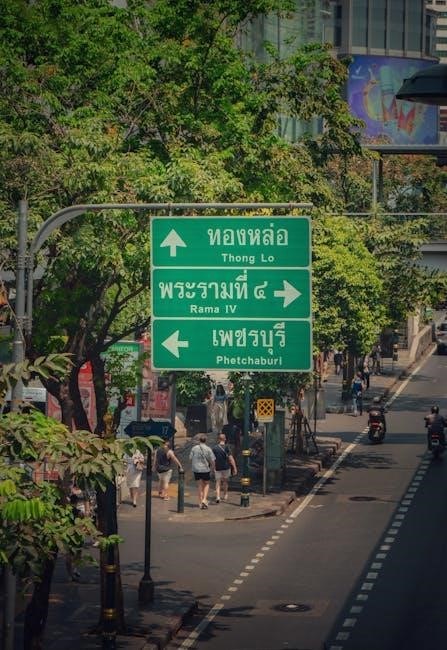Wildlife resource management is guided by principles ensuring sustainability, ecological integrity, and biodiversity conservation. It balances human needs with wildlife preservation, using science-based approaches to maintain healthy ecosystems and ethical practices, fostering collaboration among stakeholders to ensure long-term environmental and societal benefits.

Definition and Scope of Wildlife Management
Wildlife management is the process of influencing interactions among wildlife, their habitats, and people to achieve predefined ecological, social, and economic goals. It encompasses the conservation, sustainable use, and restoration of wildlife populations and their ecosystems. The scope of wildlife management is broad, addressing species conservation, habitat restoration, population control, and conflict resolution. It integrates biological sciences, policy frameworks, and community engagement to ensure biodiversity and ecological integrity. Wildlife management is applied across diverse landscapes, from protected areas to human-dominated environments, aiming to balance human needs with wildlife conservation. It is a critical tool for maintaining healthy ecosystems, supporting biodiversity, and ensuring the sustainable use of natural resources for future generations.
Importance of Wildlife Resources in Ecosystems
Wildlife resources are essential for maintaining the balance and functionality of ecosystems. They play a crucial role in seed dispersal, pollination, and nutrient cycling, ensuring the health and diversity of plant communities. Wildlife acts as indicators of ecosystem health, reflecting the overall condition of the environment. By maintaining biodiversity, wildlife resources support ecological resilience, enabling ecosystems to adapt to environmental changes. Additionally, wildlife contributes to carbon sequestration, water purification, and soil fertility, which are vital for human well-being. The loss of wildlife can disrupt these processes, leading to degraded ecosystems and reduced ecosystem services. Protecting wildlife resources is, therefore, fundamental for preserving the integrity of natural systems and ensuring the sustainability of benefits they provide to both humans and the planet.

Key Principles of Wildlife Management
Key principles include ensuring ecological integrity, promoting biodiversity, and fostering sustainable use of wildlife resources through science-based decision-making, ethical practices, and adaptive management strategies.
Ecological Integrity and Biodiversity Conservation
Ecological integrity and biodiversity conservation are cornerstone principles in wildlife resource management, ensuring ecosystems function naturally and maintain their complexity. These principles focus on preserving habitats, protecting endangered species, and restoring degraded environments to promote resilience. By safeguarding biodiversity, managers help ecosystems adapt to challenges like climate change and habitat fragmentation. Conservation efforts often involve habitat restoration, species monitoring, and controlling invasive species. These practices ensure that ecosystems retain their natural processes and interactions, supporting both wildlife and human well-being. Effective conservation also addresses human-wildlife conflicts and integrates local communities into decision-making. Ultimately, ecological integrity and biodiversity conservation aim to create sustainable, balanced ecosystems that benefit all life forms and future generations.
Sustainable Use of Wildlife Resources
Sustainable use of wildlife resources ensures that natural resources are utilized in a way that meets current needs without compromising future generations. This principle balances human economic, cultural, and recreational demands with conservation goals. Wildlife resources, such as game species, fish, and non-timber products, are managed to maintain healthy populations and ecosystems. Practices include regulated hunting, fishing, and ecotourism, which generate income while promoting conservation. Science-based quotas, licensing systems, and monitoring ensure resources are not overexploited. Community involvement is crucial, as local populations often rely on these resources for livelihoods. Sustainable use fosters stewardship, reducing overharvesting and habitat degradation. It also supports biodiversity by maintaining ecological processes. However, challenges like overexploitation and illegal activities require strong governance and enforcement to ensure long-term sustainability for both wildlife and human well-being.
Legal and Policy Frameworks for Wildlife Conservation
Legal and policy frameworks are essential for guiding wildlife conservation efforts, ensuring the protection of species and ecosystems. Laws such as the Endangered Species Act and international agreements like CITES regulate wildlife trade and safeguard threatened species. Policies are designed to balance conservation with human activities, fostering sustainable development. Government agencies, such as the USDA and NRCS, implement these frameworks, providing funding and technical assistance for conservation projects. Additionally, policies promote public engagement, ensuring that local communities are involved in decision-making. These frameworks also address emerging challenges, such as climate change and habitat loss, by integrating science-based solutions. Strong enforcement mechanisms and accountability measures are critical to ensuring compliance and achieving long-term conservation goals. Together, these legal and policy tools create a structured approach to managing wildlife resources effectively.

Management Strategies and Practices
Effective wildlife management involves adaptive strategies, science-based decision-making, and collaborative efforts to conserve habitats, control populations, and resolve human-wildlife conflicts, ensuring sustainable resource use and biodiversity preservation.
Habitat Conservation and Restoration
Habitat conservation and restoration are critical strategies in wildlife resource management, focusing on preserving and rehabilitating natural ecosystems. These practices ensure the survival of diverse species by maintaining ecological balance and biodiversity. Key actions include protecting vital habitats, restoring degraded landscapes, and enhancing connectivity between fragmented areas. Restoring habitats involves reintroducing native vegetation, improving water quality, and creating corridors for wildlife migration. Conservation efforts often target sensitive or endangered species, ensuring their habitats meet specific ecological needs. Government agencies, NGOs, and local communities collaborate to implement these strategies, supported by scientific research and policy frameworks. Effective habitat management not only benefits wildlife but also contributes to ecosystem services, such as clean air and water, and supports human well-being. Restoration projects often address climate change impacts, invasive species, and human-induced habitat loss, fostering long-term environmental sustainability and biodiversity preservation.
Population Control and Monitoring
Population control and monitoring are essential components of wildlife resource management, ensuring species numbers remain balanced with their ecosystems. These practices involve regulating populations to prevent overexploitation or overpopulation, which can harm biodiversity and ecosystem stability. Monitoring techniques include census-taking, genetic studies, and tracking technologies to gather data on population dynamics. Conservation efforts often focus on vulnerable or endangered species, employing measures like controlled hunting, reintroduction programs, or contraception to manage numbers sustainably. Science-based approaches guide these interventions, ensuring they align with ecological and ethical standards. Effective monitoring also helps detect early warnings of population declines or diseases, enabling timely responses. By maintaining healthy population levels, wildlife managers support biodiversity, ecosystem services, and human-wildlife coexistence, ensuring the long-term sustainability of natural resources. These strategies are integral to achieving conservation goals and maintaining ecological balance.
Conflict Resolution Between Humans and Wildlife

Conflict resolution between humans and wildlife is a critical aspect of wildlife resource management, addressing issues arising from competing land use, resource exploitation, and habitat encroachment. Strategies include habitat restoration, wildlife corridors, and community engagement to mitigate human-wildlife conflicts. Compensation schemes for crop damage or livestock losses encourage coexistence. Technological tools, such as wildlife deterrents and monitoring systems, help reduce encounters. Education and outreach programs foster understanding and cooperation among local communities. Collaborative efforts between governments, NGOs, and stakeholders ensure effective conflict management. By addressing the root causes of conflicts, these approaches promote harmonious coexistence, safeguarding both human livelihoods and wildlife populations. Successful conflict resolution enhances biodiversity conservation and maintains ecological balance, ensuring sustainable use of natural resources for future generations. These measures are vital for preserving wildlife while supporting human well-being in shared landscapes.
Role of Stakeholders in Wildlife Management
Stakeholders, including governments, NGOs, and communities, collaborate to balance wildlife conservation with sustainable resource use, ensuring science-based, equitable decisions for biodiversity and human well-being.
Community Involvement and Collaboration
Community involvement is a cornerstone of effective wildlife management, ensuring local stakeholders are engaged in conservation efforts. By fostering collaboration, communities contribute to sustainable practices and ethical decision-making. Educational programs and public awareness campaigns empower residents to protect wildlife habitats and participate in monitoring initiatives. Landowners, in particular, play a vital role as partners in managing wildlife on their property. This collaborative approach not only strengthens conservation outcomes but also builds trust and ensures that management strategies align with local values and needs. Active participation from communities fosters a sense of ownership, leading to more resilient and sustainable ecosystems. Such involvement is crucial for balancing human activities with wildlife preservation, ensuring long-term environmental and societal benefits.

Government Agencies and Policy Implementation
Government agencies play a pivotal role in wildlife resource management by enforcing laws and implementing policies that ensure sustainable conservation. Agencies like the USDA and NRCS provide financial and technical assistance to landowners and communities, promoting wildlife-friendly practices. Policy frameworks, such as the Wildlife Resources Management Act, align national and local efforts to protect biodiversity. These agencies also oversee permits, habitat restoration projects, and anti-poaching initiatives, ensuring compliance with international agreements. By integrating scientific research with policy, governments establish guidelines that balance human activities with ecological preservation. Effective policy implementation by these agencies is essential for maintaining healthy ecosystems and ensuring the long-term survival of wildlife populations, fostering a harmonious relationship between humans and nature. Their efforts are critical in addressing global conservation challenges and promoting sustainable development.
International Cooperation and Agreements

International cooperation and agreements are cornerstone principles in managing wildlife resources, ensuring global conservation efforts are unified and effective. Treaties like CITES and CMS regulate cross-border wildlife trade and protect migratory species, while organizations such as WCS influence global policies. These agreements address shared challenges like habitat loss and climate change, fostering collaboration among nations. International frameworks also promote knowledge sharing and resource allocation to combat illegal wildlife trafficking. By aligning conservation goals worldwide, these efforts safeguard biodiversity and ensure sustainable use of wildlife resources. Such collaborations are vital for addressing transboundary issues and achieving long-term conservation success, reflecting the interconnectedness of ecosystems and human impacts. Global unity in wildlife management is essential for protecting Earth’s natural heritage for future generations.


























